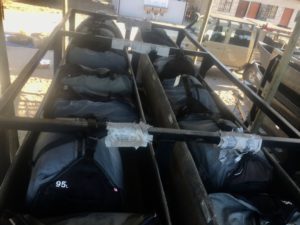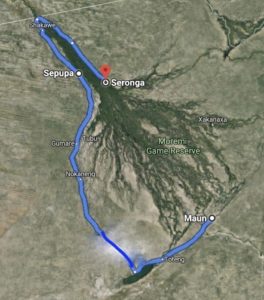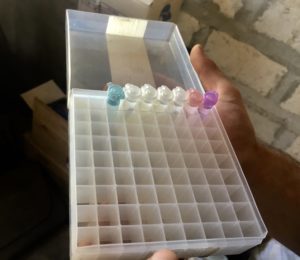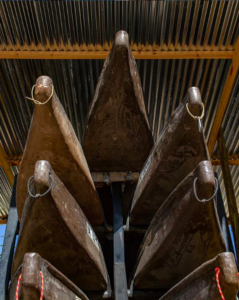This week has been dominated by the sendoff of the expedition. All the past four weeks have led up to this moment, where we say goodbye to our dedicated researchers who will help preserve one the greatest remaining intact ecosystems. The route being attempted is unbeknownst to almost all, and hippos as well as crocs are the only inhabitants of this world.

the completion of packing; the tents are inside the makoros.
The route finders are two human gps’s; they are long time locals who have some familiarity with this route. Oje and Rex are these two navigators, without whom the traveling would be far more difficult. Aside from these two, satellite imaging will be used to follow the water.
Packed and prepared, the party departed the Maun office, and with it, the knowledge and resources available for a smooth expedition. This was the last chance available to remember what we had forgotten. This moment was symbolic for me, as the culmination of all my work; the packing was out of my hands, and I either succeeded, or forgot something critical. We left Maun, and immediately we entered the world of the bush.
The delta looks like a big hand facing down, the elbow points northwest, and all the fingers point south. We travelled on the western sides of the fingers north to a place called Sepopa, once we were there, we spent a day packing a big boat for a smaller expedition. Once that boat was ready, and the depth measurement system was in place (see blog week two) we departed Sepopa and headed north to the wrist of the delta. This part is the only place where the river is skinny enough for a ferry to operate. We had gone from Maun, all the way to the Namibian border, to cross a ferry, to then continue our drive on the other side of the delta, right back down the eastern fingers. By the time we reached our destination, we had just about circumnavigated around one half of the delta.

Our route from Maun to Seronga Brings us around the delta, and right to the Namibian border.
Our destination was a village named Seronga, the put in spot for the makoros, and the last glimpse of any humans before the expedition took off. We camped at Seronga, which was good practice for the daily setup that they would have to do. We did one sample of E-DNA, both for practice, and data. Our two days in Seronga was the last chance to make sure that everything ran smoothly before they left.

Our first few E-DNA samples.
The night before they left, I was in my tent, and I could hear the cow bells in the distance being overpowered by the trumpeting of elephants. For me, this was a realization that my friends and mentors were going to be completely alone out in the delta, and these cows bells would be the last human trace that they would see in five weeks; only elephants would roam.
The morning of that day, we packed the makoros. 6 canoe-like boats carrying hundreds of kilos of gear and food. The remainder of the team arrived, including Dr. Steve Boyes, the head of the trip. When we were done packing, a said my goodbyes to the team, and watched them with their final preparations for this five week journey

The makoros. these are different from canoes in that they are paddle standing up. Photo Taken by Madeline Foote.
With an eight hour drive back around the delta, my work with the Okavango Wilderness Project was done.





There are no comments published yet.